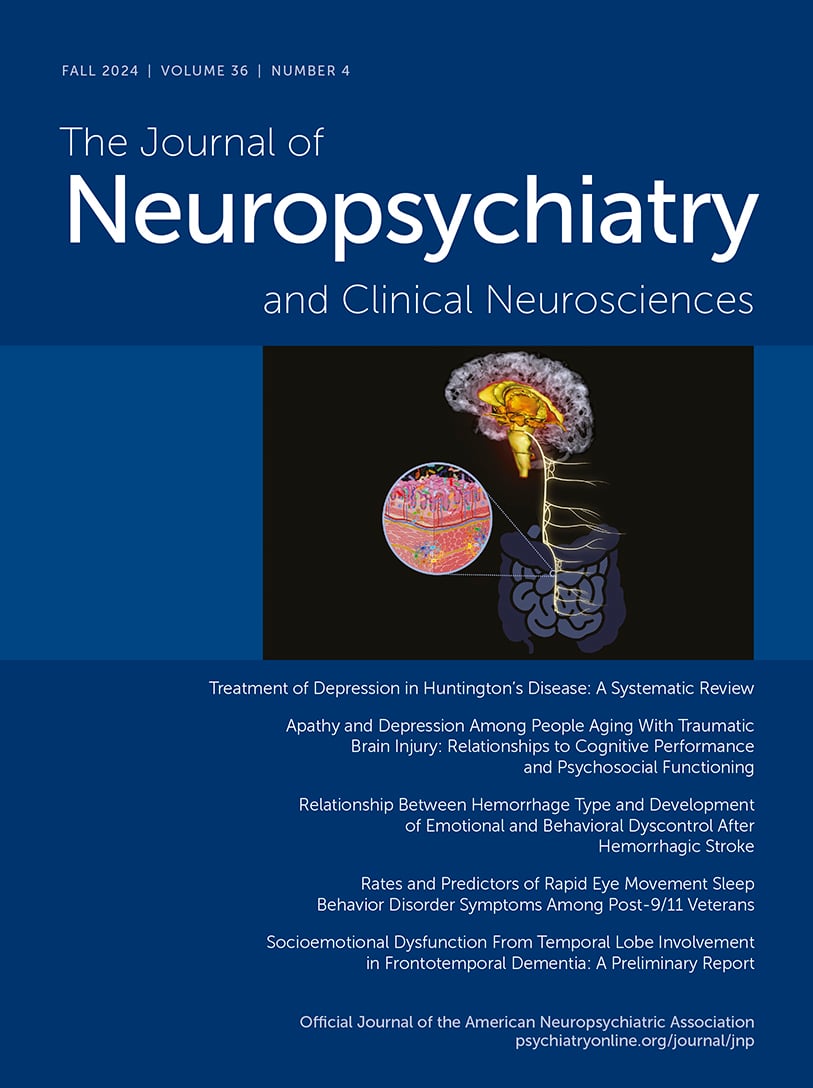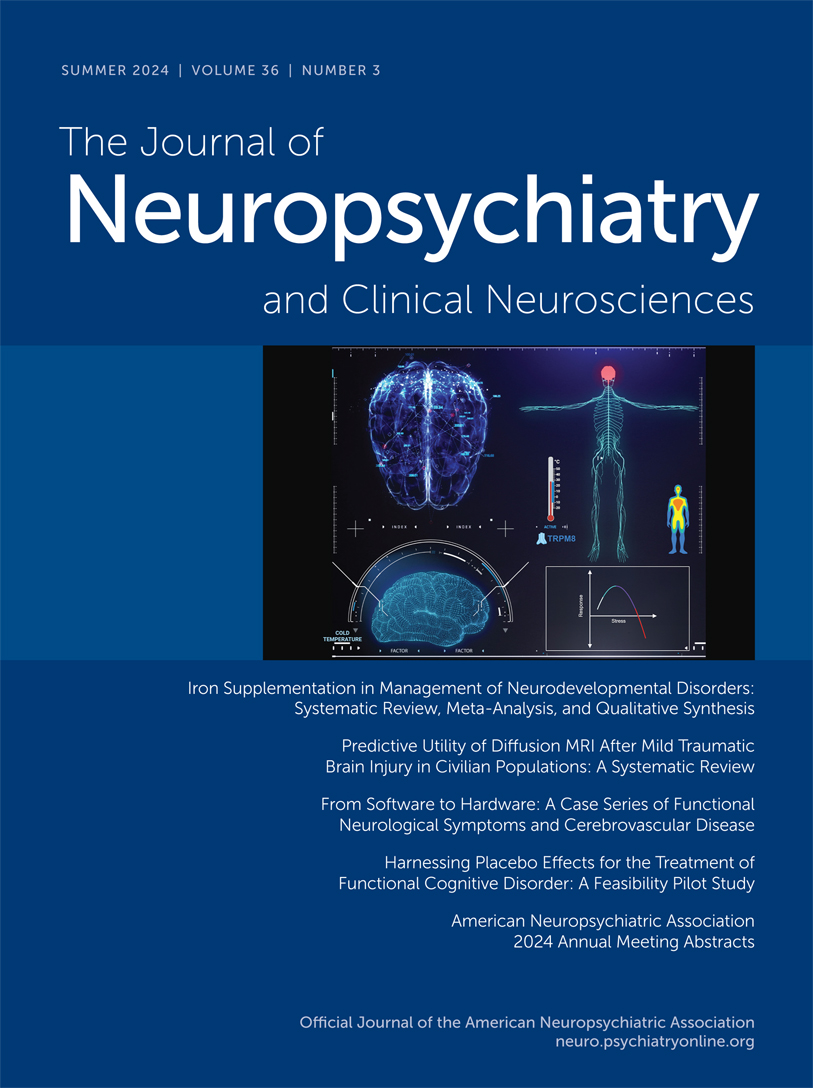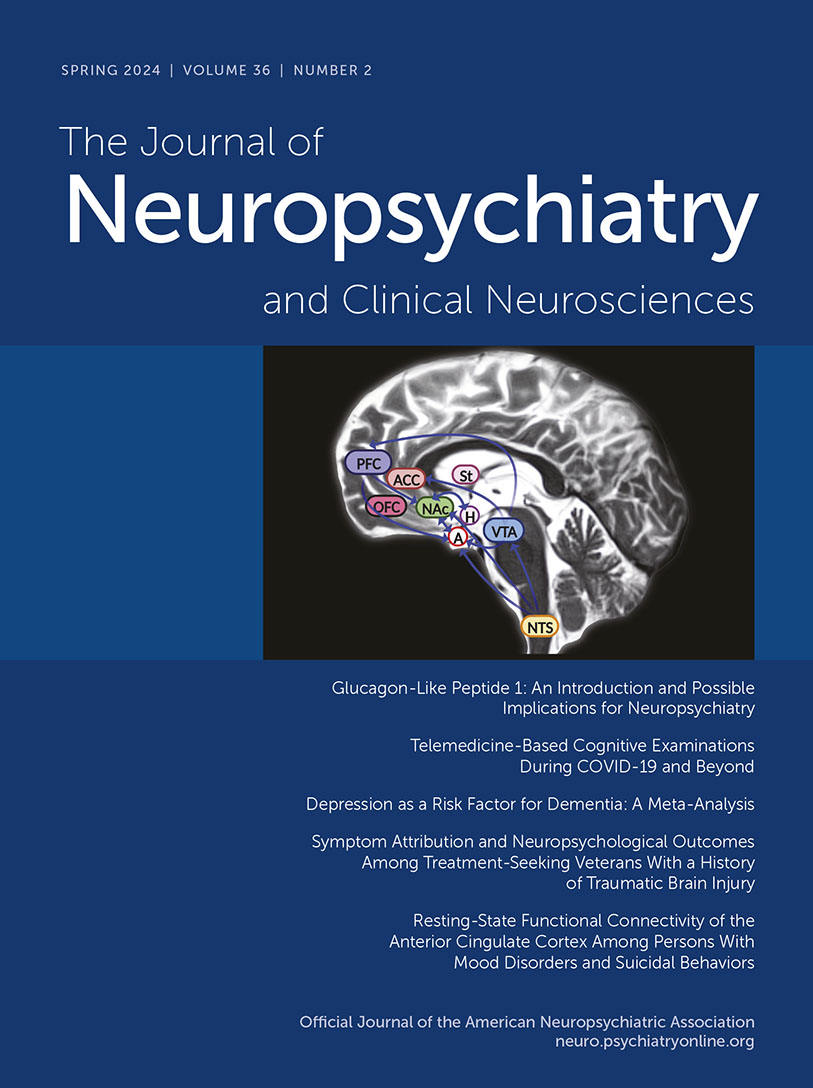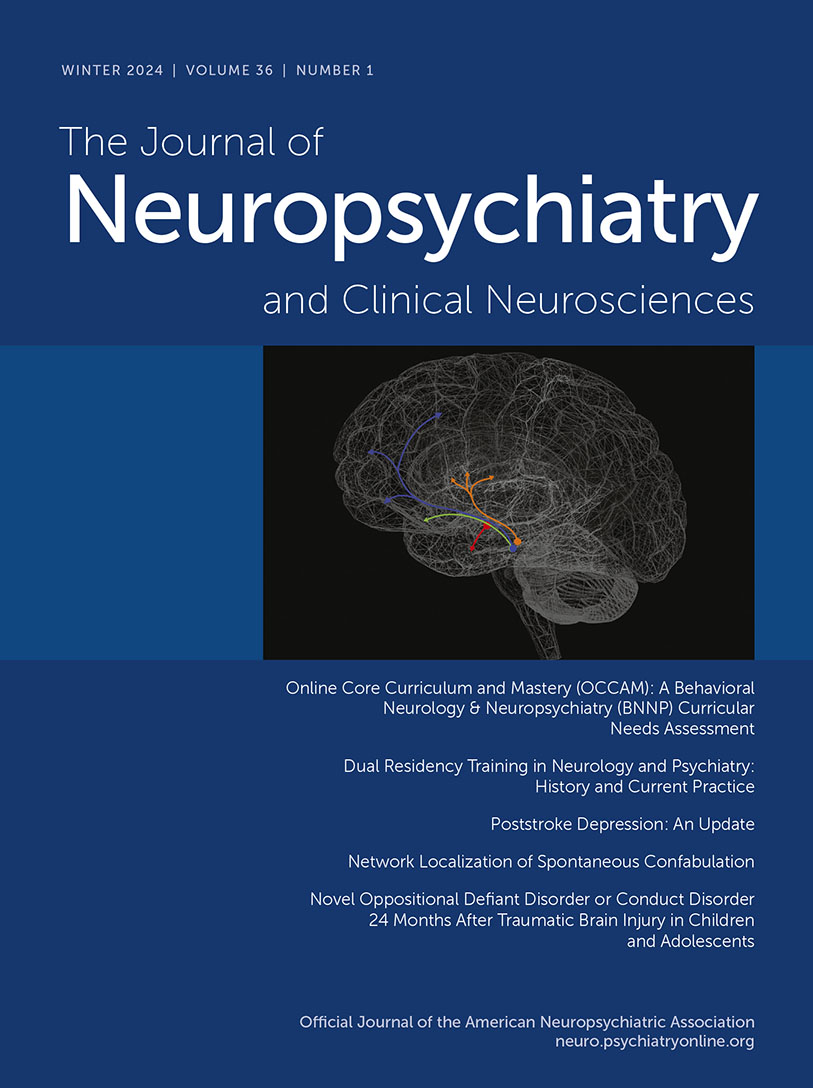The Journal of Neuropsychiatry and Clinical Neurosciences
- Volume 28
- Number 3
- July 2016
Windows to the Brain
Editorial
Special Articles
Publication date: 22 February 2016
Pages162–167Humor, or the perception or elicitation of mirth and funniness, is distinguishable from laughter and can be differentially disturbed by neuropsychiatric disease. The authors describe two patients with constant joking, or Witzelsucht, in the absence of ...
https://doi.org/10.1176/appi.neuropsych.15090238Publication date: 22 February 2016
Pages168–190Much is known regarding the physical characteristics, comorbid symptoms, psychological makeup, and neuropsychological performance of patients with functional neurological disorders (FNDs)/conversion disorders. Gross neurostructural deficits do not account ...
https://doi.org/10.1176/appi.neuropsych.14090217Regular Articles
Publication date: 22 February 2016
Pages191–194Apathy is prevalent in schizophrenia, but its etiology has received little investigation. The ventral striatum (VS), a key brain region involved in motivated behavior, has been implicated in studies of apathy. We therefore evaluated whether apathy is ...
https://doi.org/10.1176/appi.neuropsych.15100241Publication date: 21 January 2016
Pages195–198In this study, the authors retrospectively identified 11 patients with psychogenic ophthalmologic movement disorders (POMDs) (6%) among 182 patients with psychogenic movement disorders (PMDs), using medical charts and video reviews. The phenomenology ...
https://doi.org/10.1176/appi.neuropsych.15050104Publication date: 22 February 2016
Pages199–204The authors tested the hypothesis that wrist-worn actimeters can quantify the severity of poststroke apathy. The authors studied 57 patients admitted to an acute rehabilitation unit for ischemic or hemorrhagic stroke. After accounting for motor deficit of ...
https://doi.org/10.1176/appi.neuropsych.15090235Publication date: 22 February 2016
Pages205–210Neuropsychiatric symptoms (NPS) are common in Parkinson’s disease (PD). The aim of this study was to estimate the correlates of NPS in patients with PD in the initial motor stage of the disease (hemiparkinsonism). A total of 111 patients with PD and 105 ...
https://doi.org/10.1176/appi.neuropsych.15100244Publication date: 21 January 2016
Pages211–216Studies with healthy elderly adults suggest that apathy, depression, and anxiety are more common among individuals with mild cognitive impairment (MCI). This study examined differences in mood/amotivational symptoms among patients with Parkinson’s disease ...
https://doi.org/10.1176/appi.neuropsych.15090221Publication date: 22 February 2016
Pages217–222Delusional misidentification syndromes (DMSs) are persistent delusions of hyper- or hypofamiliarity for meaningful persons and places in one's environment. This study set to determine the clinical course, neuroanatomical localization, neuropsychological ...
https://doi.org/10.1176/appi.neuropsych.15100376Publication date: 28 March 2016
Pages223–231Evidence suggests that mild traumatic brain injury (TBI) is associated with long-term changes in brain function, but conventional neurocognitive tools are often insensitive to deficits after 90 days. Eye movements have been proposed as a means to identify ...
https://doi.org/10.1176/appi.neuropsych.15100243Clinical and Research Reports
Publication date: 21 January 2016
Pages232–235There is recent evidence of deficits in praxis in patients with primary dystonia. Obsessive-compulsive disorder (OCD) has been linked to disorders of higher-order motor function, such as dystonia. However, no clear mechanism underlying such a relationship ...
https://doi.org/10.1176/appi.neuropsych.15090233Publication date: 22 February 2016
Pages236–238This study explores the structural relationship between self-report and interview measures of affect in Huntington’s disease. The findings suggest continued use of both to recognize the multidimensionality within a single common consideration of distress.
https://doi.org/10.1176/appi.neuropsych.15090237Publication date: 28 March 2016
Pages239–242Restless legs syndrome (RLS) is a neurological sleep disorder with frequent (39%) coexisting psychiatric comorbidities. Patients with any psychiatric comorbidity had fewer periodic leg movements in sleep. Psychiatric disorders should be taken into account ...
https://doi.org/10.1176/appi.neuropsych.15030055Publication date: 28 March 2016
Pages243–247This study investigated the effect of an intravenous serotonin reuptake inhibitor on the neural substrates of obsessive-compulsive disorder (OCD), as intravenous agents may be more effective in treating OCD than conventional oral pharmacotherapy. Eight ...
https://doi.org/10.1176/appi.neuropsych.15090213Book Review
Abstracts
Letters to the Editor
Past Issues
View Issues Archive
Vol. 36 | No. 4

Vol. 36 | No. 3

Vol. 36 | No. 2
